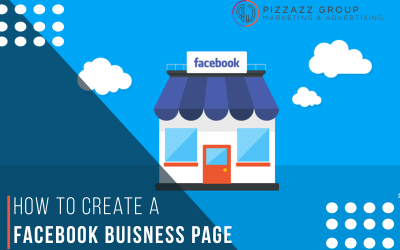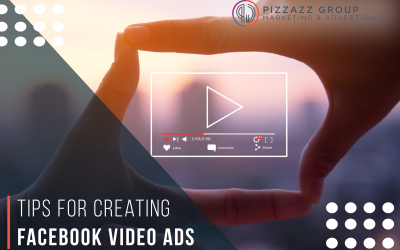
Understanding Hashtags: What Are They and Why Are They Important?
Understanding Hashtags: What Are They and Why Are They Important?

• Increase Discoverability: Hashtags help users find content related to their interests by searching or clicking on tagged keywords.
• Enhance Reach: Posts with relevant hashtags are more likely to appear in search results, explore pages, and trending topics, extending your content’s reach beyond your immediate followers.
• Join Conversations: Hashtags facilitate participation in ongoing discussions, trending topics, and community-driven conversations.
• Build Brand Identity: Create branded hashtags to establish a unique identity, promote campaigns, or encourage user-generated content (UGC).
Best Practices for Using Hashtags Effectively
1. Research and Choose Relevant Hashtags
• Keyword Research: Identify popular and trending hashtags related to your industry, niche, or specific topics using social media analytics tools or trending sections.
• Audience Insights: Understand your audience’s interests, behaviors, and preferred hashtags to tailor your content accordingly.
• Branded Hashtags: Create unique hashtags specific to your brand, campaigns, or events to foster brand recognition and encourage user participation.
2. Use a Mix of Popular and Niche Hashtags
• Broad Hashtags: Appeal to a larger audience and increase discoverability across a wider user base (e.g., #Travel, #Fitness).
• Niche Hashtags: Target a more specific audience interested in particular topics or communities within your industry (e.g., #BudgetTravelTips, #HealthyEatingHabits).
3. Limit the Number of Hashtags per Post
• Instagram: Aim for 5-10 relevant hashtags per post to maintain clarity and avoid appearing spammy.
• Twitter: Use 1-2 relevant hashtags per tweet to avoid overwhelming your message.
• Facebook: Limit hashtags to 1-2 per post for optimal engagement and readability.
4. Create Clear and Concise Hashtags
• Avoid Spaces or Special Characters: Hashtags should be continuous strings of characters (#NoSpaces).
• Use CamelCase for Readability: Capitalize the first letter of each word in multi-word hashtags (#SocialMediaMarketing).
• Be Specific and Descriptive: Use hashtags that clearly convey your message or content theme (#SummerFashionTips).
5. Research Hashtag Trends and Seasonal Topics
• Monitor Trends: Regularly check trending sections on social media platforms and explore pages to identify popular hashtags and emerging conversations.
• Seasonal Campaigns: Align your content with holidays, events, or cultural moments using relevant seasonal hashtags (#BlackFriday, #SummerVibes).
Platform-Specific Tips for Using Hashtags
• Instagram: Utilize Instagram Stories, IGTV, and Reels to include hashtags discreetly. Create location-based hashtags to reach local audiences (#NYCFoodie).
• Twitter: Participate in trending topics with hashtags relevant to real-time events. Use Twitter chats and hashtags to engage in live discussions (#TwitterChat).
• Facebook: Optimize posts with 1-2 relevant hashtags. Use hashtags in comments or updates to broaden post reach (#ThrowbackThursday).
• LinkedIn: Leverage hashtags in LinkedIn articles, posts, and comments to enhance professional networking and industry visibility (#LeadershipTips).
Advanced Strategies to Enhance Hashtag Effectiveness
• Monitor Performance: Use analytics tools to track hashtag performance, engagement metrics, and follower growth attributed to specific hashtags.
• Create Campaign-Specific Hashtags: Develop unique hashtags for campaigns, product launches, or events to track engagement and user-generated content (#YourBrandSummerGiveaway).
• Encourage User Participation: Prompt followers to use branded hashtags or create UGC for contests, challenges, or testimonials.
• Cross-Promotion: Collaborate with influencers, partners, or affiliates to amplify campaign reach and hashtag usage across multiple channels.
• Geo-Targeting: Include location-based hashtags to target local audiences and increase relevance (e.g., #SanFranciscoFood).
Monitoring and Optimizing Hashtag Performance
• Engagement Metrics: Monitor likes, comments, shares, and mentions attributed to specific hashtags.
• Audience Growth: Track follower acquisition and profile visits resulting from hashtagged content.
• Adjust Strategy: Adapt your hashtag usage based on performance data, emerging trends, and audience feedback to optimize reach and engagement.
Conclusion
For more information on Social Media Marketing, contact Pizzazz Group at customer@pizzazzgroup.com or by calling (614) 350-1681.
Related Social Media Marketing Blogs
How to Create a Facebook Business Page
By now you probably understand the importance of having a social media presence for your business. Facebook is a great start to kicking off your social media marketing strategies. You might be wondering how you’ll make your Facebook a successful page. At Pizzazz...
4 Tips on Using Facebook Carousel Ads
Facebook carousel ads are an ideal format to show up to 10 images and/or videos in a single ad. Facebook carousel ads allow you to feature one or multiple products and also gives you a platform to educate your customers on your brand and offerings. One benefit of...
3 Tips for Creating Facebook Video Ads
Are Facebook video ads a good option for my business?The answer is yes. Online users now watch 100 million hours of videos on Facebook daily. Around 51% of marketing professionals worldwide name video as the type of content with the strongest ROI. If you’re looking to...





